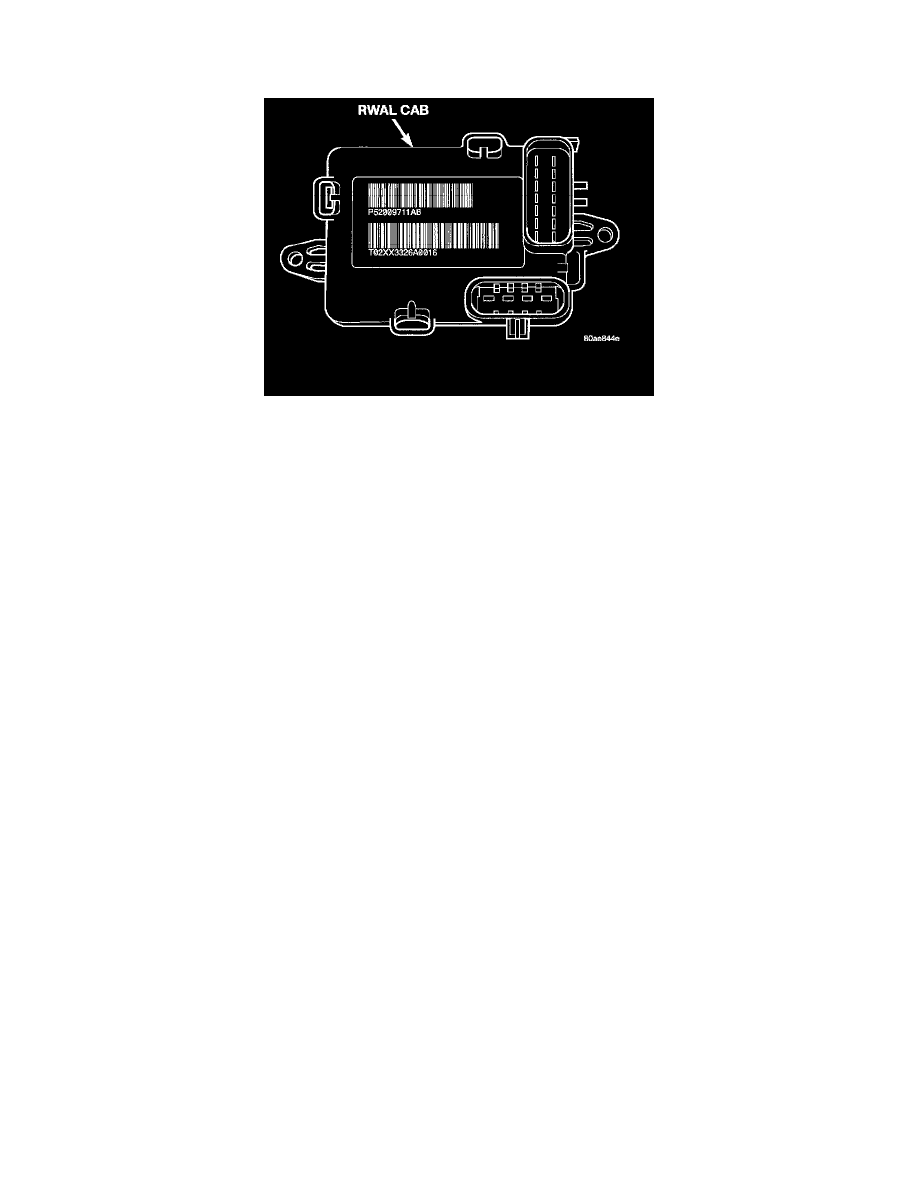Dakota R/T 2WD V8-5.9L VIN Z LDC (1999)

Electronic Brake Control Module: Description and Operation
With Rear Wheel Antilock Brakes
RWAL Cab
The Controller Antilock Brakes (CAB) is a microprocessor which handles testing, monitoring and controlling the ABS brake system operation. The
CAB functions are:
-
Perform self-test diagnostics.
-
Monitor the RWAL brake system for proper operation.
-
Control the RWAL valve solenoids.
NOTE: If the CAB needs to be replaced, the rear axle type and tire revolutions per mile must be programmed into the new CAB.
SYSTEM SELF-TEST
When the ignition switch is turned-on the microprocessor RAM and ROM are tested. If an error occurs during the test, a DTC will be set into the
RAM memory. However it is possible the DTC will not be stored in memory if the error has occurred in the RAM module were the DTC's are stored.
Also it is possible a DTC may not be stored if the error has occurred in the ROM which signals the RAM to store the DTC.
CAB INPUTS
The CAB continuously monitors the speed of the differential ring gear by monitoring signals generated by the rear wheel speed sensor. The CAB
determines a wheel locking tendency when it recognizes the ring gear decelerating too rapidly. The CAB monitors the following inputs to determine
when a wheel locking tendency may exists:
-
Rear Wheel Speed Sensor
-
Brake Lamp Switch
-
Brake Warning Lamp Switch
-
Reset Switch
-
4WD Switch (If equipped)
CAB OUTPUTS
The CAB controls the following outputs for antilock braking and brake warning information:
-
RWAL Valve
-
ABS Warning Lamp
-
Brake Warning Lamp
VALVE REAR WHEEL ANTILOCK BRAKES
If the CAB senses that rear wheel speed deceleration is excessive, it will energize an isolation solenoid by providing battery voltage to the solenoid.
This prevents a further increase of driver induced brake pressure to the rear wheels. If this initial action is not enough to prevent rear wheel lock-up,
the CAB will momentarily energize a dump solenoid (the CAB energizes the dump solenoid by providing battery voltage to the solenoid). This opens
the dump valve to vent a small amount of isolated rear brake pressure to an accumulator. The action of fluid moving to the accumulator reduces the
isolated brake pressure at the wheel cylinders. The dump (pressure venting) cycle is limited to very short time periods (milliseconds). The CAB will
pulse the dump valve until rear wheel deceleration matches the desired slip rate programmed into the CAB. The system will switch to normal braking
once wheel locking tendencies are no longer present.
A predetermined maximum number of consecutive dump cycles can be performed during any RWAL stop. If excessive dump cycles occur, a DTC
will be set and stored in the CAB memory. If during a RWAL stop, the driver releases the brake pedal, the reset switch contacts will open. This signal
to the CAB is an indication that pressure has equalized across the RWAL valve. The CAB will then reset the dump cycle counter in anticipation of the
